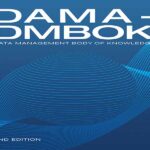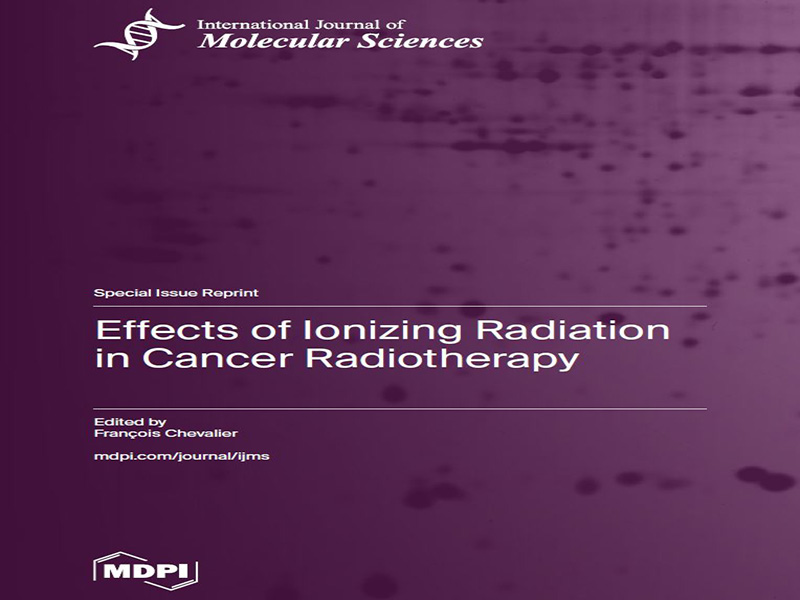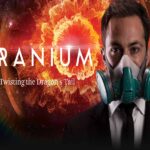- عنوان کتاب: Effects of Ionizing Radiation in Cancer Radiotherapy
- نویسنده: François Chevalier
- حوزه: درمان سرطان
- سال انتشار: 2025
- تعداد صفحه: 216
- زبان اصلی: انگلیسی
- نوع فایل: pdf
- حجم فایل: 4.85 مگابایت
برای مدت طولانی، به طور گسترده پذیرفته شده بود که اثرات بیولوژیکی تشعشعات یونیزه کننده مانند مرگ سلولی، آسیب DNA و جهش زایی ناشی از یونیزاسیون مستقیم ساختارهای سلولی، به ویژه DNA، یا از آسیب غیرمستقیم از طریق گونههای فعال اکسیژن تولید شده توسط رادیولیز آب است. این مدل “اثر هدفمند” (TE) با مشاهدات متعدد، که در آن سلولهایی که مستقیماً تحت تابش قرار نگرفته بودند، پاسخهایی مشابه سلولهای تحت تابش مستقیم نشان دادند، مورد تردید قرار گرفته است. بنابراین، امروزه پذیرفته شده است که اثرات مضر تشعشعات یونیزه کننده نه تنها به سلولهای تحت تابش محدود میشود، بلکه به سلولهای مجاور یا دوردست که تحت تابش قرار نگرفتهاند نیز محدود میشود. اثرات غیر هدفمند (NTEs) تشعشعات یونیزه کننده، که شامل ناپایداری ژنومی، اثرات همسایگی ناشی از تابش و اثرات آبسکوپال میشود، به عنوان وقوع اثرات بیولوژیکی در سلولهای تحت تابش قرار نگرفته به دلیل تابش سایر سلولهای جمعیت تعریف میشوند. برخلاف TE که پاسخ به دوز خطی نشان میدهد، NTEها پاسخ به دوز غیرخطی نشان میدهند که در دوزهای پایین تابش تأثیر قابل توجهی دارد. مکانیسمهای سلولی و مولکولی مرتبط با NTEها هنوز به طور کامل درک نشدهاند، زیرا عمدتاً به نوع سلول و کیفیت تابش وابسته هستند. اکنون به طور گسترده پذیرفته شده است که در شرایط خاص، سلولهای تابش دیده عوامل استرسی تولید میکنند که بر سلولهای تابش ندیده در محیط نزدیک (اثر همسایگی) یا در فاصله دور (اثر ابسکوپال) تأثیر میگذارند. پاسخ سلولی مشاهده شده در سلولهای تابش ندیده میتواند بسیار شبیه به پاسخ سلولهای تابش دیده با شدت تعدیل شده باشد. NTEها شامل ترشح یا آزادسازی طیف وسیعی از عوامل استرس توسط سلولهای تابش دیده، از سیتوکینها و مولکولهای ترشح شده خاص گرفته تا گونههای فعال اکسیژن یا ضایعات سلولی اکسید شده هستند. در مورد ارتباط بین سلولهای مجاور، عوامل استرس میتوانند از طریق اتصالات شکافی یا در مورد ارتباط از راه دور، از طریق وزیکولهای کوچک حاوی مولکولهای مختلف تعبیه شده منتشر شوند. NTEها معمولاً به عنوان اثرات تابش با دوز پایین در محافظت در برابر پرتو، در ارتباط با ناپایداری ژنومی، القای جهش و خطر سرطان ثانویه مورد مطالعه قرار میگیرند. در زمینه پرتودرمانی، TE و NTE میتوانند همزمان درگیر باشند و در مورد NTE، وقتی ناحیه تحت تابش بسیار نزدیک به یک اندام حساس باشد، میتواند خطرات عوارض متعددی را ایجاد کند. از سوی دیگر، NTEها میتوانند اثر بیولوژیکی پرتودرمانی را بر روی سلولهای سرطانی دوردست غیر تابش دیده (مانند متاستازها) با اثرات مرتبط با ایمنی (اثر آبسکوپال) یا بر روی سلولهای سرطانی غیر تابش دیده مجاور سلولهای سرطانی که به طور خاص با آنتیبادیهای رادیواکتیو هدف قرار گرفتهاند (اثر همسایگی مثبت) افزایش دهند.
For a long time, it was widely accepted that the biological effects of ionizing radiation such as cell death, DNA damage, and mutagenesis result from the direct ionization of cell structures, particularly DNA, or from indirect damage through reactive oxygen species produced by the radiolysis of water. This “targeted effect” (TE) model has been questioned by numerous observations, in which cells, that were not directly irradiated, exhibited responses similar to those of the directly irradiated cells. Therefore, it is nowadays accepted that the detrimental effects of ionizing radiation are not restricted only to the irradiated cells, but also to non-irradiated adjacent or distant cells. The non-targeted effects (NTEs) of ionizing radiation, which include genomic instability, radiation-induced bystander effects, and abscopal effects, are defined as the occurrence of biological effects in non-irradiated cells because of the irradiation of other cells in the population. In opposition with TE, that display a linear dose–response, NTEs exhibit a non-linear dose–response, with a marked effect at low doses of radiation. The related cellular and molecular mechanisms of NTEs are still not completely understood, as they are mainly dependent on the cell type and the radiation quality. It is now widely admitted that in specific conditions, irradiated cells produce stress factors, which affect non-irradiated cells in the close environment (bystander effect) or at distance (abscopal effect). The cellular response, observed in non-irradiated cells, can be very similar to the response of irradiated cells, with a modulated intensity. NTEs involve the secretion or the release by irradiated cells of a broad range of stress factors, from cytokines and specifically secreted molecules to reactive oxygen species or oxidized cellular wastes. In the case of communication between neighborhood cells, the stress factors can disseminate through gap junctions, or in the case of distance communication, through small vesicles containing various embedded molecules. NTEs are commonly studied as low-dose radiation effects in radioprotection, in association with genomic instability, mutation induction, and secondary cancer risk. In a radiotherapy context, TE and NTE can be involved at the same time and, in the case of NTE, it could present several risks of complications when the irradiated area is very close to a sensitive organ. On the other hand, NTEs could increase the biological effect of the radiotherapy on distant non-irradiated cancer cells (such as metastases) with immune-associated effects (abscopal effect) or on non-irradiated cancer cells adjacent to cancer cells specifically targeted with radioactive antibodies (positive bystander effect).
این کتاب را میتوانید از لینک زیر بصورت رایگان دانلود کنید:
Download: Effects of Ionizing Radiation in Cancer Radiotherapy





































نظرات کاربران